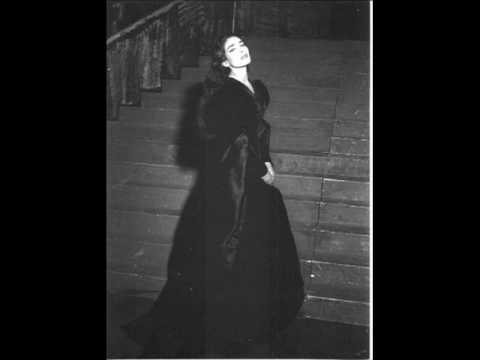Opera Daily 🎶 — The Easter Hymn
This week's Opera Daily features The Easter Hymn from Mascagni’s Cavalleria Rusticana
👋 Hello to the new Opera Daily subscribers who have joined us this week. I hope you’re sitting on a plushy couch with a warm beverage and enjoying your weekend. You can check out the complete Opera Daily archives and the playlist on YouTube for more selections. If you were forwarded this email by a friend, join us by subscribing here:
We’ve made it to another Easter and Passover holiday at Opera Daily.
For those around last year, we covered one of my favorite pieces — The Easter Hymn from Mascagni’s Cavalleria Rusticana. We are making this an annual tradition!
No matter what we believe in, it’s hard to deny the beauty behind this piece – in its music and meaning.
It is Easter morning in a 19th-century Italian village. Santuzza’s character sings the Easter Hymn in this excerpt, also referred to as both “Regina Coeli” and “Inneggiano”. She is singing to herself as her Sicilian village takes part in Easter festivities.
“Inneggiamo, il Signor non è morto” — “We rejoice that our Savior is living!”
We rejoice that our Savior is living!
He all-glorious arose from the dead;
Joys of heaven the Lord to us giving,
All the sorrows of darkness are fled!
🎧 Listen here (4 minute listen): Maria Callas as Santuzza, singing “Inneggiamo, il Signor non è morto” (The Easter Hymn) from Mascagni’s Cavalleria Rusticana
Cavalleria Rusticana has so much goodness packed in such a short time.
Its first performance in 1890 was a huge success, with Mascagni taking forty curtain calls!
This opera is most frequently staged together with another verismo work (verismo was a realist style of opera that emerged in Italy in the 1890s), Pagliacci, composed in 1892 by Ruggero Leoncavallo. These two operas are often associated with one another, often being referred to by the abbreviation “Cav/Pag”.
More context?
It is Easter morning in a Sicilian village. Turiddu sings of his love for Lola, wife of Alfio. Lolo and Turiddu had been a couple before he joined the army, but when he returned, he found her married to Alfio. Distraught about losing Lola, he seduces Santuzza but now has abandoned her and rekindled his relationship with Lola.
Santuzza’s heart is broken, and she tries to win back Turiddu. Crazy jealous, she tells Alfio about Lola and Turridu. Alfio challenges Turridu to a duel. They both run off to battle, and a couple of moments later, a villager screams out that Turridu has been murdered.
Santuzza is sadly viewed negatively by the village because of her time with Turiddu and considers herself unworthy to enter the church for the Easter service. At this point in the opera, the famous Easter Hymn is sung by the villagers and by Santuzza.
I like to think that we can take away some meaning from this piece given Santuzza’s situation — that no matter what we’ve done in the past, it does not define who we are now. And that Santuzza and the villagers are a community when celebrating Easter together, even if only for a brief moment.
Does this sound familiar? If yes, you might have heard this music in The Godfather Part III.
Thank you for reading (and listening), and feel free to reply with feedback or leave a comment.
Buona Pasqua a tutti!
Michele
PS. If you missed last week’s selection, we talked about how “knowing” the performers enhances our experience in arts and sports.
❤️ If you enjoyed this selection, please hit the heart to like it (and share it too!)




The Easter procession is one of
The most beautiful scenes in all opera. The old Zeffirelli Met production was a spectacular staging of Sicilian life. Several years ago the powers replaced it with non descriptive figures marching through a non secular circle of chairs Pathetic!!
Happy Easter and Passover to all.
I sob every time I hear the Easter Hymn, this time being no exception. When I was young I thought that if I ever got married I'd want the Intermezzo to play as dad to walked me down the aisle. (This was well before the Godfather!) I never did get married so that didn't happen. When I was much older my dad died on a Good Friday. My sister took charge of the funeral arrangements and, not knowing my earlier plans for the Intermezzo, choose this music for when the family escorted dad's coffin down the aisle and out of the church. We were leaving rather than entering, and I was escorting him rather than dad escorting me, but the locale and music were right. Still makes me laugh and cry at the same time when I think about it. Thanks for this and I hope you're having a wonderful Easter!